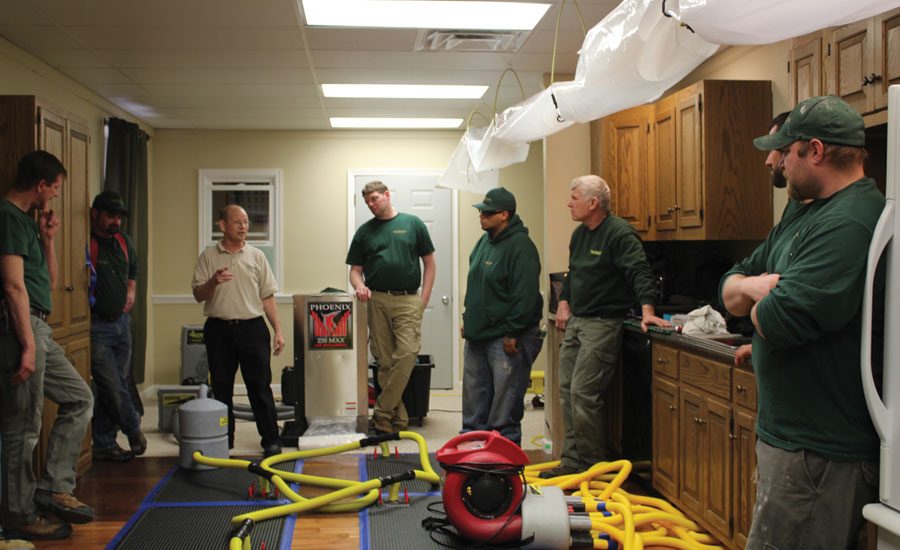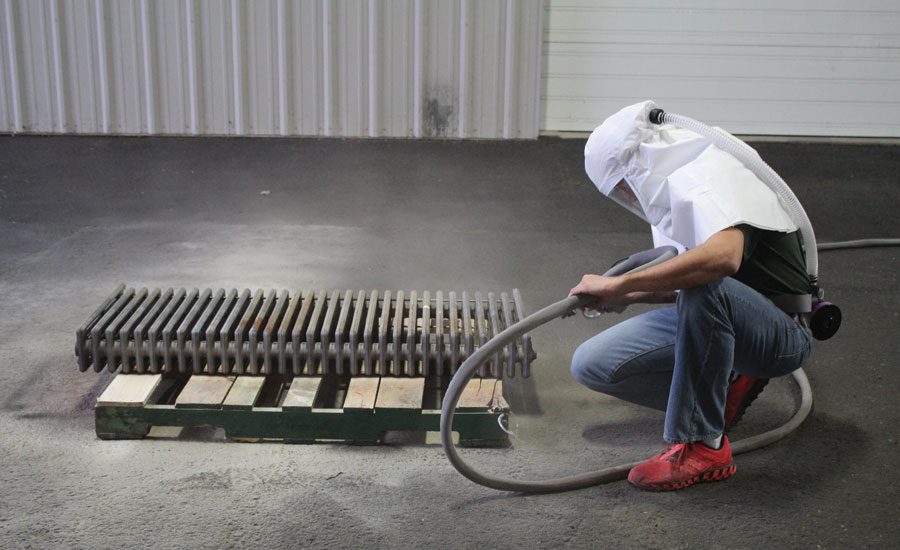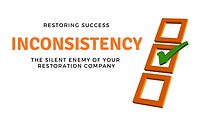“Good Morning Team – This month we are going to learn a new cloud based management system, new moisture monitoring software, how to operate our new moisture meter, retrain on proper extraction techniques, learn the new calculations in the S500, review a tool box talk safety topic, and, and, and”
It is easy to be overwhelmed by the training needs of your company in today’s world where things are changing and evolving daily. From technology, expectations of those you serve, generational changes, and even learning styles and tools, training management is challenging. When companies need training more than ever to remain competitive, it is also one of the first expenses to get trimmed when times are tough.
Your ability to manage your organization’s training needs will have a direct impact on your company’s overall success, profitability, and future as a going concern. Training is an investment in your company not unlike a new dehumidifier or vehicle and good training management will yield a positive return on investment, ROI. Some of the direct benefits of proactively managing your company’s training needs include but are not limited to:
- Employee Morale: Learning, succeeding and personal growth feels good. A person who works for a company that believes in them enough to “invest” in his or her career and future will feel valued and appreciated. Having a well-developed training program and development opportunities show that you care about their personal and professional development and it will show in their work product and drive for results.
- Sustainability, Expansion and Growth: One of the greatest assets of a good restoration company is the people in the organization. One of the biggest challenges in a restoration company is the people in the organization. Restoration companies invest in recruiting and hiring new people, need additional people to expand, and need existing people to develop professionally. Training programs allow you to deliberately train your new hires to become productive members of the organization and allows others to increase their value to the organization in an effective and efficient manner.
- Adaptability and Agility: It is not enough to have a culture that adopts change; although, it is a great start. As the change occurs, you have to be able move quickly and train quickly. From equipment to software, our ability to efficiently and effectively train our staff can ultimately determine our ability to utilize the latest technology, comply with evolving standards of care, and accommodate the expectations of those we serve.
Because we have much to gain and much to lose, we must tackle the concept of training management. Begin by breaking down the areas your company must address:
- New Employee Training or On-Boarding: Refer to May, 2016 Restoring Success Are you On Board with Employee On-boarding:
- Company Policies, Procedures, Standards
- Technical Skills
- Soft Skills
- Growth and Development: How does a team member qualify and access additional training and development as it pertains to both technical and soft skills.
- New products, equipment, processes, software: Who and how do you facilitate training utilizing the new and the changed.
- Retraining “Train and Retrain” Training is never done. Retraining is important so you have consistency and refreshers to keep that which is important top of mind and fresh.
There is not one method of training that will fit all your training needs and be right for all people or disciplines. Once you identify the areas in which you need to develop your training programs, evaluate the learning and training opportunities available. Consider combinations of learning and training. For example, a skilled water restoration technician is most likely a product of classroom training, hands-on training, field training (apprenticeship), and potentially continued education via web based or on-line learning.
- Classroom
- Hands-on
- Field Training: There is a parallel to being a “teaching hospital” except for buildings and contents. Pick your favorite Hospital Show and imagine that is your restoration company minus the drama of course. Create a teaching environment and culture in the field.
- On-line learning
Today’s restoration companies and more importantly, tomorrow’s Restoration companies must consider training a discipline and department. Create a culture that thinks “training.” Everyone who purchases vehicles, equipment, meters, products, software, almost anything and everything, everyone should be thinking about its trainability. It is not just about the purchase: Is it easy to train the staff to use? Is there training support? How much does the training cost? All the new, great things available to the industry are useless if the team can’t use it.
Reward training in the field. To become a “teaching hospital for buildings” you have to encourage this to happen. Make it part of the review process; publicly acknowledge the good trainers.
Seek knowledge and information about learning, learning science, and learning management systems. There is much for us to learn from large organizations, research, and from those who specialize in learning regarding how we can best teach and train within our organization and industry.
Training should be in the DNA of the company. It can many times be the solution to the problem. How many mistakes are made because someone was not properly trained? The better we manage our training needs, the more likely we will sustain, grow, and be profitable.
At our training center we used to say that “Knowledge is Power” and then we realized that we need to change it to: “The implementation of knowledge is power,” as said by Larry Winget. Now, the sharing and dissemination of knowledge is power.
Being a part of your organization’s training is rewarding and can be fun for all of those involved. It is not unlike anything else we do that requires effort and hard work.
“I know the price of success: Dedication, hard work, and unremitting devotion to the things you want to see happen.” Frank Loyd Wright









Report Abusive Comment